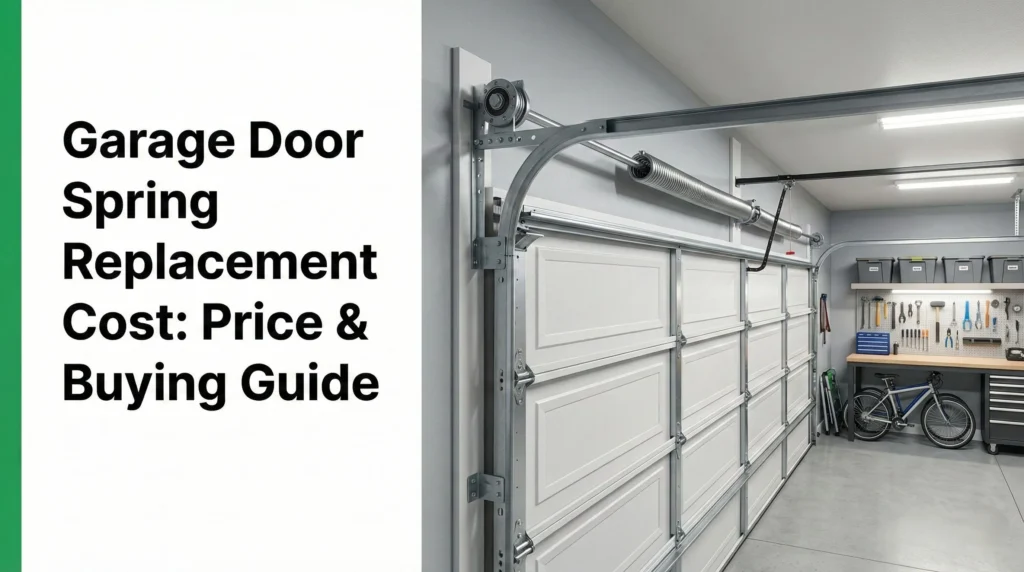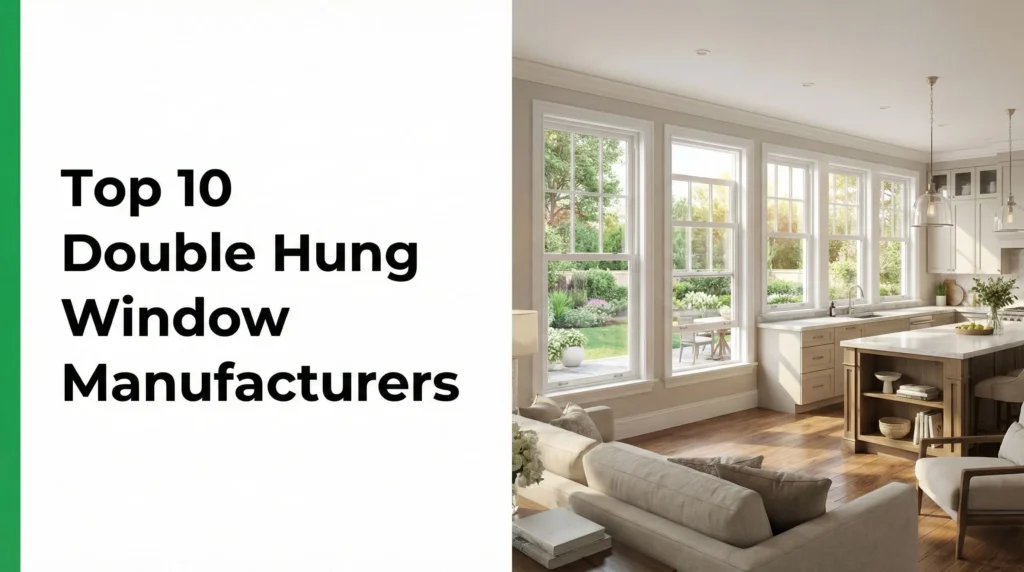Have your once‑bright white vinyl window frames turned yellow, chalky, or dull? This common problem, caused by sun exposure and oxidation, can make your whole home look dated and poorly maintained.
Forget the generic advice. This definitive guide provides a tiered approach to cleaning, tailored to the severity of your window frames’ condition—from light yellowing to heavy, chalky oxidation.
We’ll cover safe DIY methods, effective commercial products, and what not to use to avoid permanent damage.

In a hurry? Choose your situation:
- Jump to Method 1: Light Yellowing & Annual Maintenance
- Jump to Method 2: Moderate Oxidation & Stubborn Stains
- Jump to Method 3: Severe-Chalky Oxidation—Deep-Yellowing
Quick Decision Guide
| Symptom | Best Method | What You’ll Use | Time |
|---|---|---|---|
| Slight yellowing, normal dirt | Method 1 | Warm water and vinegar (70/30) | ~20–30 min |
| Noticeable yellowing, light chalk | Method 2 | Baking soda paste and a soft brush | ~30–45 min |
| Heavy chalking, deep discoloration | Method 3 | Commercial vinyl/PVC restorer | ~45–60 min |
Why Do Vinyl Windows Turn Yellow and Oxidize?
UV radiation and oxygen degrade the outermost PVC layer, leading to color change and a powdery “chalk” on the surface.
- UV degradation: Sunlight breaks polymer chains in PVC. Over years, this alters how light reflects from the surface, shifting white to yellow or dull.
- Oxidation: The powdery, white film is oxidized, degraded vinyl itself—not just dirt. It must be gently removed or chemically restored.
- Other factors: Airborne pollutants, insect sprays, fertilizers, harsh cleaners, and infrequent washing accelerate discoloration.
Safety First & Essential Toolkit
Protect your skin and eyes, ventilate well, and use only non‑marring tools and cleaners designed for vinyl.
Essential Safety Gear
- Rubber or nitrile gloves
- Safety glasses
- Good ventilation (open windows/doors; use a fan)
Your Cleaning Arsenal
- For all methods:Microfiber cloths, soft‑bristle brushes (no wire), spray bottle, bucket, clean water, towels
- Method 1 (Light): Distilled white vinegar, mild dish soap (optional)
- Method 2 (Moderate): Baking soda, small bowl, plastic spreader or soft brush
- Method 3 (Severe): Vinyl siding/window frame restorer or PVC cleaner, applicator pads, manufacturer‑recommended towels
- Optional helpers: Painter’s tape (protect adjoining finishes), plastic scraper, small detailing brushes (for grooves)
Choose Your Cleaning Method (From Gentle to Heavy‑Duty)
Answer first: Start with the least aggressive method that fits your frame’s condition. Escalate only if results are insufficient.
For Light Yellowing & Annual Maintenance
Best for: New discoloration, general grime, yearly upkeep.
Answer first: Use a warm water and vinegar mix (about 70/30) to dissolve light soils and initial oxidation safely.
Why it works: Vinegar’s mild acidity loosens mineral films and grime, improving brightness without damaging PVC.

Steps:
- Mix solution: ~70% warm water + ~30% distilled white vinegar in a spray bottle.
- Mask nearby finishes if needed (stone, wood).
- Spray a small section liberally.
- Wait 5–10 minutes to let the solution work.
- Gently scrub with a soft brush or microfiber.
- Rinse with clean water until no residue remains.
- Dry completely with a fresh microfiber to prevent spotting.
Pro tip: Add one drop of mild dish soap per quart for greasy soils—rinse thoroughly.
For Moderate Oxidation & Stubborn Stains
Best for: Noticeable yellowing, slight chalkiness, and stains that vinegar can’t lift.
Answer first: Use a baking soda paste—its micro‑abrasion increases cleaning power without scratching vinyl.
Why it works: Baking soda provides controlled mechanical action to remove oxidized film safely when used with a soft applicator.

Steps:
- Create a thick paste:3 parts baking soda to 1 part water (adjust as needed).
- Apply paste to stained areas with a cloth or soft brush.
- Scrub in small circles with light pressure; reapply paste as needed.
- Rinse thoroughly until all residue is gone.
- Dry fully to assess results; repeat on persistent spots.
Pro tip: Work in shaded conditions; hot surfaces set residues and reduce effectiveness.
For Severe, Chalky Oxidation & Deep Yellowing
Best for: Heavily chalked surfaces and long‑term UV yellowing.
Answer first: Use a purpose‑formulated vinyl/PVC oxidation restorer, following the label precisely and spot‑testing first.
What to use:
- Vinyl siding/window frame restorers: Formulated to remove oxidation and refresh color.
- Specialized PVC cleaners/restorers: Designed for plastics; often leave a protective finish.

Process:
- Spot test an inconspicuous area; wait for dry‑down to judge sheen and color.
- Clean the frame first (Method 1) to remove loose soil.
- Apply product per label with recommended pad/cloth.
- Work in small sections; avoid lapsing onto glass/seals (mask if needed).
- Buff off per instructions; assess and apply a second pass if required.
Pro tip: Some restorers are semi‑permanent. Uniform application is crucial—tape edges and maintain even pressure.
The “Do Not Use” List: Cleaners That Will Permanently Damage Vinyl
Harsh chemicals and abrasives can etch, embrittle, or discolor PVC and gaskets—avoid them.
| Do Not Use | Why It Damages Vinyl | Safer Alternative |
|---|---|---|
| Chlorine bleach or ammonia cleaners | Accelerate yellowing; can embrittle PVC and corrode hardware | Vinegar mix (Method 1) or PVC‑safe oxidizers/restorers |
| Abrasive powders, scouring pads, steel wool | Scratch/etch surface; scratches trap dirt and oxidize faster | Baking soda paste with soft cloth (Method 2) |
| Magic Erasers (melamine foam) | Micro‑abrasive that can dull sheen and create uneven patches | Soft microfiber + baking soda or a vinyl restorer |
| Solvents: acetone, lacquer thinner, paint remover | Dissolve or craze PVC; damage seals and glazing beads | Manufacturer‑approved PVC cleaner/restorer |
| Pressure washers | Force water into seals and weeps; may dent or scar vinyl | Low‑pressure hand clean; gentle rinse |
Note: If biological growth (algae/mildew) is present, use a vinyl‑safe, non‑chlorine cleaner labeled for plastics. Rinse thoroughly and keep off seals.
The Final Step Everyone Misses: How to Prevent Future Yellowing
Keep the surface clean and add UV protection to slow oxidation dramatically.
Establish a Simple Cleaning Routine
- Schedule gentle cleaning twice per year using Method 1.
- Rinse after storms or heavy pollen to reduce residue that accelerates oxidation.
Apply a UV Protectant (High‑Impact Tip)
Like waxing a car, a UV protectant shields vinyl from sunlight and helps repel grime.

- Product type: Automotive/marine‑grade UV protectant safe for plastics/vinyl (e.g., 303 Aerospace Protectant—check label).
- Application:
- Clean and dry the frame.
- Spray onto a microfiber (not directly on the frame).
- Wipe a thin, even coat; let haze lightly.
- Buff dry with a second cloth.
- Frequency: Every 3–6 months in high sun; 6–12 months in shade.

Frequently Asked Questions (FAQs)
Can you paint yellowed vinyl window frames?
Use vinyl‑safe paints and primers; follow manufacturer guidance. Proper cleaning, scuffing, and adhesion promoters may be required.
How long does it take for vinyl windows to start yellowing?
In high sun, early yellowing can appear in 5–10 years; shaded elevations may remain whiter much longer.
Does the chalky residue mean my windows are failing?
Chalking is usually superficial. If frames aren’t cracked, warped, or brittle, cleaning/restoration often works.
Will a pressure washer work for cleaning oxidized frames?
High pressure can damage seals and glazing. Use hand methods outlined above.
- Troubleshooting: Can You Use Windex or WD‑40 on pvc Windows?
- Maintenance: Cleaning and Maintaining uPVC Windows
- Painting: How to Paint Exterior Vinyl Windows for a Lasting Finish
- Painting: Can You Paint Vinyl Windows?
- Cost analysis: The Average Cost to Install Vinyl Windows
- Install: Installing Vinyl Windows in a Brick House
- Maintenance: How to Repair a Cracked Vinyl Window Frame
- Maintenance: Replacing upvc Window Glass & Parts
- Install: How to Install J‑Channel and Trim Around Windows with Vinyl Siding










